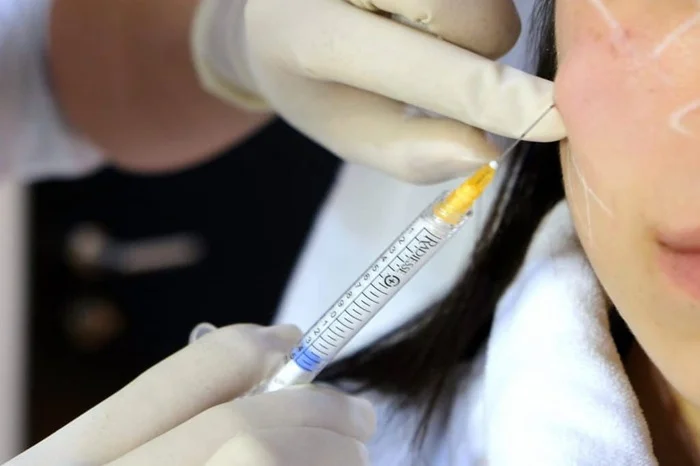Dermal fillers have become a popular choice for individuals seeking non-surgical solutions to enhance their facial features and combat signs of aging. These injectable treatments can restore volume, smooth out wrinkles, and improve overall facial aesthetics. However, one of the most frequently asked questions by patients is, “How long do dermal fillers last?” Understanding the duration of these treatments is essential for effective planning and managing expectations regarding maintenance and touch-up sessions.
In this article, we will delve into the various types of dermal fillers available, their expected duration, and the factors that influence how long they last. By gaining insight into these aspects, patients can make informed decisions about their aesthetic treatments and better understand the commitment involved in maintaining their desired appearance.
What Are Dermal Fillers?
Dermal fillers are injectable substances designed to add volume to specific areas of the face, smooth out wrinkles, and enhance facial contours. The most common type of filler is hyaluronic acid (HA), a naturally occurring substance in the body that helps retain moisture and provides structural support to the skin. There are several types of dermal fillers available on the market, each with unique properties and applications.
Types of Dermal Fillers
Hyaluronic Acid Fillers:
- Examples include Juvederm and Restylane.
- These fillers typically last between 6 to 18 months.
- They are favored for their natural compatibility with the body and ability to attract moisture.
Calcium Hydroxylapatite Fillers:
- An example is Radiesse.
- These fillers generally last around 12 months.
- They stimulate collagen production while providing immediate volume.
Poly-L-lactic Acid Fillers:
- An example is Sculptra.
- These can last between 2 to 5 years.
- They act as a collagen stimulator and often require multiple sessions for optimal results.
Permanent Fillers:
- An example is Bellafill.
- These are designed to provide long-lasting results, potentially lasting indefinitely.
- While they offer durability, they come with higher risks of complications.
Each type of filler serves different purposes and has varying longevity based on its composition and intended use.
How Long Do Dermal Fillers Last?
The longevity of dermal fillers can vary significantly based on several factors, including the type of filler used, the area treated, and individual patient characteristics. Here’s an overview of how long some popular dermal fillers typically last:
Juvederm Voluma: Up to 24 months
Juvederm Ultra: Approximately 12 months
Juvederm Vollure: Approximately 12-18 months
Juvederm Volbella: Approximately 12 months
Restylane Defyne: About 12 months
Restylane Refyne: About 12 months
Restylane Lyft: About 12 months
Restylane Silk: Approximately 6-10 months
Sculptra: 2-5 years
Radiesse: Approximately 12 months
While some fillers like Juvederm Voluma can last up to two years with proper maintenance, others may require touch-ups as soon as six months after initial treatment.
Factors Influencing Longevity
Several factors can influence how long dermal fillers last:
Type of Filler
The formulation of the filler plays a significant role in its durability. Hyaluronic acid fillers typically last between six months to two years depending on their density and intended use. For instance, thicker formulations designed for deep tissue support may last longer than those intended for superficial lines.
Injection Technique
The skill and experience of the injector are critical in determining how effectively the filler performs over time. Proper placement and technique ensure even distribution and optimal results, which can enhance longevity. An experienced injector will know how to apply the filler in a way that maximizes its duration while ensuring natural-looking results.
Treatment Area
The location where the filler is injected significantly affects its lifespan. Areas with more movement, such as lips or around the eyes, tend to metabolize fillers faster than more stable areas like the cheeks or jawline. Therefore, patients may require more frequent touch-ups in high-movement areas compared to low-movement areas.
Individual Metabolism
Each person’s metabolism affects how quickly their body breaks down substances, including dermal fillers. Individuals with faster metabolisms may find that their fillers do not last as long as those with slower metabolic rates.
Additionally, age plays a role; younger individuals often have higher metabolic rates which can lead to quicker degradation of fillers.
Lifestyle Factors
Lifestyle choices can also impact filler longevity:
Sun Exposure: UV rays can degrade both skin quality and filler materials.
Smoking: Nicotine constricts blood vessels and reduces blood flow, potentially accelerating filler breakdown.
Diet and Hydration: A healthy diet rich in vitamins can support skin health and prolong results.
Skin Condition
The condition of a patient’s skin prior to treatment can influence how long fillers last. Well-hydrated skin with minimal damage tends to retain fillers better than dry or damaged skin. Patients seeking treatment should consider incorporating a good skincare regimen prior to receiving fillers.
Maintenance Treatments
To maintain desired results from dermal fillers, regular maintenance treatments are often necessary. Depending on the type of filler used and individual factors, patients may need touch-ups every few months or annually. It’s essential for patients to discuss their goals with their injector during consultations to establish an appropriate treatment plan tailored to their needs.
Conclusion
Dermal fillers offer an effective solution for enhancing facial aesthetics and combating signs of aging. Understanding how long these treatments last is crucial for managing expectations regarding maintenance and touch-up sessions. Factors such as the type of filler used, injection technique, treatment area, individual metabolism, lifestyle choices, and skin condition all play significant roles in determining longevity.
By choosing an experienced injector and adhering to a proper skincare routine post-treatment, patients can maximize the duration of their dermal fillers while achieving natural-looking results. Ultimately, informed decisions about aesthetic treatments lead to greater satisfaction with outcomes and enhance overall confidence in one’s appearance.
Related topic:
How Long Do Lip Dermal Fillers Last?
How much are dermal fillers for nose?
Can Fillers Get Rid of Deep Wrinkles?


